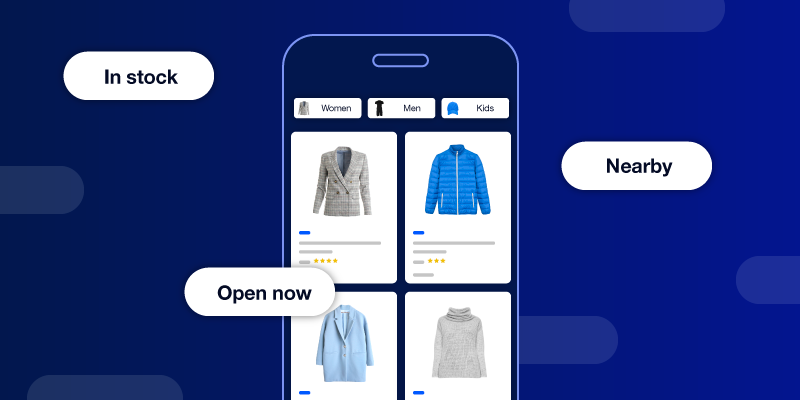Google continues to make it easier for consumers to find the products they want. Recently, the tech giant shared new details about the latest developments in search and shopping, which pointed to the ever-increasing value of quality product data. Here’s how Google’s recent updates benefit merchants who have high-quality data in their product listings.
1. Google has added a horizontal menu to help shoppers navigate to more specific product listings on mobile search.
Although the majority of website visits come from mobile devices, most online purchases still occur on desktop devices. The disparity between mobile browsing and mobile conversions means there’s room for growth on the commerce side. Google aims to improve the mobile shopping experience by adding visual shopping features to the search results for product queries.
One of the newest additions is a horizontal bar at the top of the search display, which allows shoppers to filter products by different attributes and make their queries more specific. For example, if someone searches “sweater vest,” the horizontal bar displays options for gender, age, sizing, style, material, and more. Selecting one of the filters loads new search results that best align with the selected product attribute.
In essence, Google rewards merchants who provide complete and high-quality data in their product listings, while merchants without optimized product data quickly become less competitive.
How merchants can take advantage: Add useful product nouns to your titles and provide complete, accurate data in your product listings.
2. Shoppers can filter for “nearby” and “in-stock” products.
A new filter feature in the local search results allows shoppers to only see the products that are in stock nearby. This helps merchants reach the customers who are most likely to make a purchase right away.
Imagine a scenario where several students forget they have a group project due the following day, and they need to get a tri-fold board for their presentation as soon as possible. By searching for “tri fold board” and selecting “in stock” on the map of local search results, they can buy what they want immediately without wondering if the product is available.
Of course, the accuracy of this feature depends upon merchants’ ability to reliably update their available inventory. Successfully managing local inventory feeds enables retailers to bring more local traffic to their stores. Consumers have shown they love the convenience of click-and-collect options like curbside pickup, so using local inventory ads effectively is key to keeping up with the current state of ecommerce.
How merchants can take advantage: Retailers with physical storefronts can use local inventory ads to show Google users which products are currently available in the area.
3. Visual searches and shopping are becoming more sophisticated.
It’s widely known that product images influence shoppers’ purchasing decisions, and good images help merchants drive conversions when online consumers don’t have the opportunity to interact with products in person. However, Google’s latest search enhancements for images showcase their potential as a product discovery tool as well.
A recent Google blog highlights how users can leverage Google Lens to capture an image of something they see in person and then search for it to find a matching product, or a product with similar characteristics. It’s pretty incredible.
How merchants can take advantage: Maximize the potential for Google’s algorithm to match your product with any snapshot consumers take. Include multiple high-quality images in your product listings to improve product discovery and conversions.
Keep an eye on our blog for more insights about Google Shopping, holiday strategies, and ecommerce tips.

With its leading data feed management platform, Feedonomics helps brands, retailers, and agencies optimize and list products on hundreds of shopping destinations around the world. Learn more about our full-service solutions for advertising channels and marketplaces.




